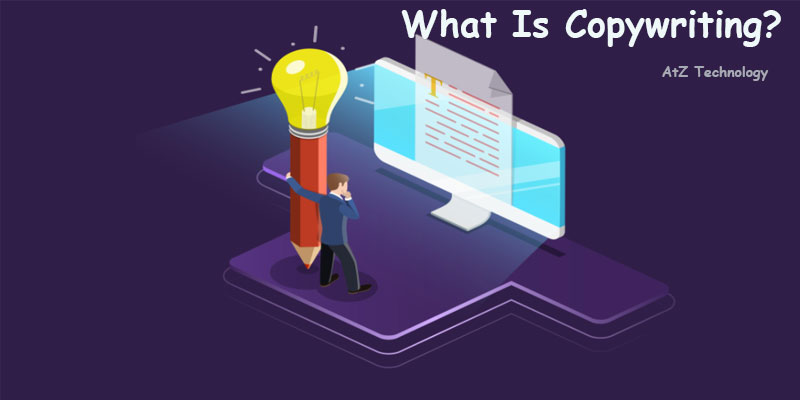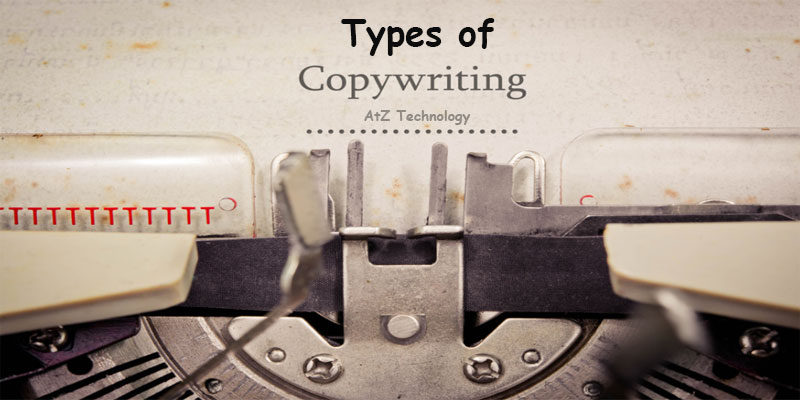Copywriting for Beginners: Definition, History, And Steps to Learn

Yes, you are right, it is important to have plenty of ideas about copywriting before you take this as a profession.
There are some ways in which you will be able to identify the step by step process of what to do and what not to do.
In this article, I will tell you 10 superb steps to learn for beginners by which you can ensure to take this copywriting as the footprint of your dream job.
10 Steps to Learn Copywriting for Beginners
If your want to learn Copywriting then follow this 10 steps in this process. Don’t jump with reading full. So, let’s start…
1. What Is Copywriting?
Copywriting is the art of writing content that advertises a specific good or service which includes videos, podcasts, websites, white paper, newspaper articles, emails, internet advertisements, brochures, landing page etc.

Although copywriting is one of the most popular and cited jobs, few people actually know what copywriting is. Beasuse, people often get confused with the words “copywriting” and “copyrighting”.
In reality, they are absolutely different concepts, copyright is the ownership of intellectual property and the right to use it. Copywriting does not have anything to do with plagiarism, although it is frowned upon in the community.
A good copywriter is essential for any company. Because the information is readily available to consumers in modern times. A company needs to capitalize on this opportunity and get as much marketing as possible in order to grow quickly and be successful.
This is why copywriters are so highly demanded in the current job market. Copywriters have also a huge cultural and social impact. We’ll discuss all these effects in detail but first, we need to learn types of copywriting now.
2. Types of Copywriting
In the internet world, there are various types of copywriting but we will talk about the most used and prominent ones so that you can take advantage of it.

So, Here’s the deal:
Content Marketing & SEO Copywriting
If you don’t know anything about long-tail and short-tail keywords for search engine optimization and content marketing then it will be tricky for you. If you want to get a solid amount of traffic on your website; you have to optimize your content accounting search engine. Probably you will get a rank on the first page.
If you can do that you have done half of the part of the work. After rank on the number 1 page, now you have to stick to your audience in your article. Otherwise, it won’t give any benefit out of it. Make sure your content grabs the attention of the reader as well.
Email Copywriting
It won’t get any benefit if the mail goes to the “trash” or “Bin” just looks at a glance. You don’t want them to look over and go out of the mailbox, is it? To keep your copy in the mailbox, you have to catch the eyes of your targeted person. These works do the copywriters and they can drag the audience’s attention like sugar for an ant.
Website Copywriting
Your website is a shop window – you can drive traffic through your content and after reading the article make sure visitors convert in the customer. Content has to be optimized for search engines and visitors and both are the same coins of the back and front. You can’t leave any of this.
Firstly, your article has to come on the 1st page on the top 3 positions. After that, you have to drag the visitor’s attention and stick to the page.
Sometimes, the audience to your website and scan all the articles without reading full. In that case, your website has to suck the full attention of the audience.
Product Description Copywriting
The good product description writing can differentiate from one product to another and can get into the search engine. A copywriter can directly affect the sale through his/ her writing.
More you can write catchy words with detailed product description; it will be able to get more sales. In product, description copywriters have a huge opportunity in this area. As e-commerce sites are regularly increasing day by day.
More have: A lot of options have if you can build yourself with this mindset, to be part of the copywriting industry person. Other opportunities are:
- Brochure
- Video
- Product
- Sales
- Landing page and many more.
3. Correct Grammatical

Without any hesitation, every single interested copywriter agreed with me that correct grammatical is the key of the written content. If you are not good at it then let’s be good at it. After that go to the other steps.
4. Jargon-Free
Do not write industry-specific terms. If you are an SEO specialist and you use CPC and CTR types of terms; people often will get confused. Besides, people will not understand what you are trying to say.

Alone with that, avoid slang and acronyms all the time. Definitely slang words are not professional writing and you cannot make sure your used acronyms will understand everyone.
A great copyright makes his/her copy understanding of fifth grade students.
5. Powerful Call – To – Action (CTA)
To explain your product, service, brand and company is half of the road to talk. Your writing gives the perfect sense of an idea that audiences will be interested in CAT or give a clear vision.

What is the perfect goal of copywriting? It should fill the need of the audience.
If you want people to buy something, make sure you have conveyed the proper message through your writing so that they can take a division easily.
6. Understand the Audience
In order to distribute your message, you have to understand your audience and who will read your copy.

A new person comes to your home who mightn’t know about your band, whereas your email subscriber already knows about your story. So, If you send the same message to everyone both new and old then it will be harsh and can lose your targeted audiences.
Do not target everyone, try to focus on specific your niche or Business related audiences. By doing that you can convert your regular visitor to profitable clients.
7. Keep Writing

When you are beginning in the writing career, the most important thing to do is keep writing. You will not get any Client and it is very common but you have to write ever it is free. There are places you should practice your writing work – medium, Quora, Reddit, join groups and start your own blog.
8. Knowing some Tools
To take your writing in advance, you have to know some tools which can help and make the process easier. Tools cannot write your thoughts but it aids your vision in the writing arena. Here is some:

- Grammarly
- Hemingway app
- Googles docs
- Google Trends
- BuzzSumo
- Thesaurus.com vs Power Thesaurus
- Coschedule Headline Analyser
To know more advanced tools common below and tell us which tool is your favorite.
9. Tell Stories
The best way to grab attention is to tell a story. People can connect easily with the story. In copywriting, connect is very important; maybe they don’t want your product or service or other things right now but if you can connect with your targeted audience now.

Then in the near future they will definitely buy from you. We like to trust people but you could not be the appropriate person every time. So, through storytelling you can take the advantage easily. Some steps you need to follow in storytelling process:
- Write active voice
- Write easy words
- Keep to the main topic, don’t make it long.
- Carefully in choosing of words
- Tell a story around the benefits of the audience or Client perspective.
10. Copywriting as a Profession
Copywriting was a popular way to earn money ever since printing was invented however it was seen as a permanent source of income. It was considered a risky job and so, there were literally no full-time copywriters until centuries after it gained popularity.

John Emory Powers changed that all in the 1830s. He was the first person who didn’t work for a newspaper like most copywriters. He specialized in the field of copywriting so he basically invented the concept of freelancing in copywriting.
We will discuss his impact in depth when we analyze famous copywriters. Inspired by him, many people started to see the utility of the skill and quickly copywriting became one of the highest paying jobs and most respected and revered career paths.
Copywriters became members of high society and started owning and running their own firm.
So, Let’s start to understand the history copywriting for further benefits in our carrier.
History of Copywriting
Copywriting is an ancient practice. It has existed since people learned to read and write. Traces of it can be traced from as far back as Babylonian, Ancient Greek, Persian and Roman times.

Sales is the oldest recorded profession so it only makes sense that as soon as people were able to communicate in a new format, they started to use it to advertise their goods and services.
The emergence of it as a profession however first started when people used to write up posters and stick them on walls and poles.
Printing and its impact
Before people invented printing, they used to write everything by hand and that made copywriting a tedious and labouring task. Copywriters not only had to write these copies by hand but they also had to make them look good to attract more people.
This meant that they had to master handwriting and find creative ways to make their texts stand out. In 1040, the first movable type printers were discovered. Printers had existed in the past in the form of woodblock printing from 200 AD however they weren’t highly popular or efficient as they were really expensive methods and inflexible.
What’s more, is that woodblock printing only came to Europe in the 1300s by which time the Asian world was already using the movable type.
The movable type printers still didn’t have a huge impact. It was effective and took less effort but it still took lots of time and didn’t allow mass production. This changed in 1440. German goldsmith Johannes Gutenberg invented the printing press.
This started what is now known as the printing revolution. The printing press changed the world as we know it because of its incredible speed and efficiency. Even when it was a relatively new product in the 1500s, it was able to print 20 million copies.
This allowed printing large quantities at low prices. From Gutenberg’s native Mainz, the machine quickly gained traction and made its way to the rest of western Europe. Soon, the entire world had adopted this method and sped up the renaissance.
This meant advertising on paper was a hot commodity at the time and this popularized copywriting as a profession. In the 16th century, they improved once again, now printing over 150 copies. This inspired the first English newspaper, “ The Oxford Gazette” to print advertisements on their papers.
This opened a whole new market for the profession. Since then, printing has improved even more. In 1925, Dot-matrix printers were created. They were computerized and reached a whole new level of efficiency.
This has been perfected since as the printers we use today, digital printers, have been in use in 1991 and can print several copies in literally seconds. It’s safe to say copywriting was accelerated by these convenient methods of duplicating your writing instead of writing it again and again.
Corporate attention
As we just established, copywriting became a desirable profession after Powers’ impact. Businesses were specifically hiring copywriters. Huge influential advertising agencies such as NW Ayer and son in the United States, Havas in France, and Reynell and son in the UK started seeking out copywriters.
This demand grew manyfold when these firms started becoming global. This attention along with that of newspaper companies such as the aforementioned “ The Oxford Gazette”, “The Times” and “New York Post” helped copywriters get jobs easily and even open up their own firms. These copywriters usually opened up advertising and marketing agencies as it is what they specialized in.
Abbott Mead Vickers BBDO, Calkins and Holden, DDB LLC, BBDO, Publicis, Leo Burnett Worldwide, Chiat/Day, Foote Cone & Belding, McCann Erickson, Ogilvy & Mather, Young & Rubicam, Saatchi & Saatchi, Wieden+Kennedy and several other giant conglomerates were founded by copywriters. These firms have all been huge players in the financial market and most of them continue to dominate their respective fields.
Internet
Radio and television had plenty of impact on copywriting. They allowed copywriters to write sales scripts for talk shows and advertisements. This created a new field of communication that was paperless. Information was spread through wires rather than distributed by hand on sheets of paper.
This changed the thinking pattern of copywriters however it still wasn’t that huge a market as most companies couldn’t afford tv ads or radio promotions, most small companies today still can’t. So the paper was still a basis for copywriters. In early 1960, a storm was brewing in the information technology field.
People were discovering a cheap and wireless transmission of spreading information across the entire world. This was only a dream at the time but in the 1980s the dream was realized. The phenomenon swept the world and the internet became a pivotal part of official work.
Copywriters could send emails at the time but it still wasn’t effective enough to displace paper. In the 2000s, the moment had finally come. Firms swarmed in the online community looking to sell their goods and this gave the copywriters numerous opportunities.
This was further fuel when e-commerce bloomed into what it is today. Companies like Amazon,eBay, Walmart and google desperately scoured the net to find people who were able to advertise goods and services on their websites. Copywriters were now a hot commodity.
Today, the internet is literally a one-click service, anyone who wants to post an ad or write up a review can do it at virtually no cost to themselves. This has made the process so cheap that even firms that literally just start off can advertise online and successful marketing requires copywriters.
Due to this, copywriting is an incredibly famous profession among young people. Along with professionals, there are plenty of freelancers who don’t make a career out of it but do earn from the skill. The role the internet has played in excelling copywriting culture is astounding and without it, copywriting would still be entirely paper-based.
Pop Culture
For those who have been living under a rock, pop culture refers to the latest trends in our society. In other words, it’s the beliefs, practices, objects, ideas, and topics that are famous and discussed right now. Pop culture for the youth today is content we consume online.
It was television a generation back, radio before that and books even further back. Copywriting was never considered part of pop culture because it just wasn’t entertaining or present readily. Before the internet shakeup we just discussed, all copywriting was either brochures and articles grouped in with other books or scripts for advertisements on radio and tv.
Now we notice an odd phenomenon, the internet has changed the way people view content. This means that things that were never cool like bird watching and bad acting are celebrated and people enjoy seeing these things even though there is nothing inherently fascinating about these things, Copywriting has also gained much attention.
The emails, online ads, and weblogs people see on a daily basis have integrated copywriting into our society. Along with that, the financial aspect of copywriting has inspired plenty of people to learn it to earn a little more money. Movies and TV shows, the biggest contributors to pop culture, have also represented copywriting in a positive and fashionable manner.
For example, the immensely famous show Mad Men features a copywriter in Peggy Olson. Elizabeth Moss, the actress who plays that role, has gained plenty of critical acclaims. The role has even been cited as a catalyst for feminism on TV. Her acting has been lauded by fans as well and people still watch that show to this day although it went off the air in 2015.
These types of favourable portrayals of copywriters make the profession even more popular and trendy. There are several other examples in pop culture which elevate the status of copywriters and they can be credited with the interest in copywriting in the current generation.
As you can see, copyrighting has a rich history and has grown with the times. It’s a progressive concept and one of the few jobs that will never be obsolete. As long as people need to sell, they will need copywriters.
Artificial intelligence can never match the creativity and vigour of human beings so jobs that require such complex functions can never be fulfilled by computers.
Now that we have lightly discussed the art of copywriting, let’s take a moment to appreciate the artist. We shall take a look at the forefathers and pioneers of the skills. People who mastered and revolutionized selling through writing.
Famous Copywriters
These people changed the field itself. Showing us new ways to write to sell and helping progress ideas that furthered the careers of millions. Their collective impact is immeasurable and it can’t be overstated how important they were in this field.
Benjamin Franklin FRS FRSA FRSE (1706-1790)
Although he wasn’t a copywriter by profession, he did Copywrite. He had to, being one of the most famous and influential inventors of all time.
We can talk about him for pages and pages because of how much he did to progress the world. I’ll try to summarise it; Franklin was a polymath who is one of the founding fathers of the United States and inventor of the lightning rod, bifocals, and the Franklin stove there.
That’s the best I can do. You should really read the Wikipedia link attached to his name because that small description does not do him justice.
John Emory Powers (1837–1919)
Often referred to as “the father of modern creative advertising,” his impact on copywriting specifically is worth noting. Being the first copywriter in history, the single-handedly showed the world the merits of professionally copywriting.
His fame and success inspired several others to pursue that career. His writing was straightforward and used facts to sell goods. His simplicity and strong determination gave him a unique style that still inspires many people today.
His talents didn’t go unnoticed as he was inducted into the advertising hall of fame in 1954. Along with copywriting, he also added to the freelancing community and promoted the culture of working for oneself. The world still appreciates his influence and remembers how great his contributions were.
Earnest Elmo Calkins (1868–1964)
The deaf American innovator is a pioneer of modern advertising. Despite being physically challenged, he overcame his obstacles and inspired other deaf people to achieve great things.
A master of the soft sell, his copywriting is cited as an early example of the slower persuasive method of sale. It wasn’t just his writing that got him attention though.
He was also a creative man who incorporated art in advertising and used fictional characters to sell his products. For this reason, he has been called one of the most important graphic designers of all time.
Claude C. Hopkins (1866–1932)
Another pioneer of advertising. He was known for his style of direct marketing where he made sure his clients were benefited. He had a reputation as an ethical man who had really strong morals, going as far as to advocate honesty.
He is proof that people do not lie and cheat to succeed in the art of sales. His sales copies represented his moral stance as they were direct and did not lie or exaggerate any features, much like Powers.
Robert Collier (1885-1950)
“You must intensify and render continuous by repeatedly presenting with suggestive ideas and mental pictures of the feast of good things, and the flowing fountain, which awaits the successful achievement or attainment of the desires.” This is a quote from the brilliant Irish author himself.
Being the nephew of another influential writer, Peter Fenelon Collier, he grew up in a household that nurtured his creativity and free-thinking. This made him a resourceful copywriter skilled in the art of direct mail. He was also an expert in psychology, publishing several self-help books.
Albert Lasker (1880 – 1952)
A businessman who revolutionized advertising, Albert Lasker was the son of Nettie Heidenheimer Davis, a successful Prussian businessman who was president of numerous banks. From a young age, he had experience with business, watching his father run multiple banks.
His ideas changed radio advertising and political campaigns. His copywriting focused on appealing to the consumer’s psychology.
He was a republican, famously managing the campaign of Warren G. Harding in 1920, which they won by taking a remarkable 60.3 percent of the votes. In comparison, the last presidential vote of 2016 saw a percentage split of 46.1 to 48.2 between the top two candidates. Later in his life, Lasker became a philanthropist, helping the poor people across the United States.
Alex Faickney Osborn (1888–1966)
The man who created brainstorming was also a famous copywriter. Osborn was a renowned author, publishing several books on creative thinking.
His copywriting was so successful that he opened his own advertising firm in 191 along with Bruce Fairchild Barton and Roy Sarles and named it BDO, it’s now the conglomerate, BBDO, a worldwide advertising agency network.
His leadership saw BBDO survive the great depression of the 1930s, a testament to his advertising expertise.
F. Scott Fitzgerald (1896-1940)
The legendary author was once a copywriter. Although he quit after only a couple of months, it’s worth noting it was his first job after leaving the army.
Now, he is renowned for publishing literary masterpieces such as “ The Great Gatsby” and “ The Curious Case of Benjamin Button” which exemplified life in the 1920s. It isn’t hard to see that his writing style is heavily inspired by copywriting. For example, his descriptions were always lavish and usually highlighted the positive characteristics of objects in his books.
Rosser Reeves (1910-1984)
Former chairman of the Ted Bates agency. Reeves is often credited with finding the concept of Unique Selling Points (USP). This was highlighted in his sales copies where he clearly highlighted specific aspects of his products rather than suggesting the product was absolutely perfect in every way possible.
He earned his clients millions of dollars and is considered a pioneer in television advertising. Reeves wrote about his views and opinions in his book, “Reality in Advertising” for the publisher Knopf in 1961 and that book is still taught at Harvard Business School.
Copywriting may not have been his specialty but that doesn’t take away from the fact that he changed the art form forever.
Alec Guinness CH, CBE (1914-2000)
That’s right folks, Obi-Wan Kenobi was a copywriter. Alec Guinness’ first job was copywriting at the tender age of 20 while he was still in drama school.
This taught him an important skill for actors: Selling the unsellable. Actors need to pretend they are someone else for a living and convince watchers that this person is really them.
They have to sell a lie. And boy did Mr.Guinness master the art. His illustrious film career saw him portray the major character in hugely successful movies such as Jedi Master Obi-Wan Kenobi in the star wars franchise, Prince Faisal in Lawrence of Arabia, General Yevgraf Zhivago in Doctor Zhivago, and Col. Nicholson in The Bridge on the River Kwai.
Over his illustrious career, he has won several prestigious awards such as a BAFTA and an academy award and was nominated for several more.
Mary Frances Gerety (1916-1999)
Little is known about her personal life or career. It’s surprising considering she invented the most famous slogan of all time. “ A Diamond Is Forever” literally rescued the failing diamond industry after the great depression. People did not buy the product due to the high price and the fact that most people barely had enough to survive at the time.
As the target audience for diamonds were women, De Beers, one of the biggest diamond companies, assigned Gerety, a woman, as a prime copywriter. This was an important insight into how sexist the work ethics at the time were.
She had to find the words to embody the love that a diamond represents, how romantic the product was. Did she succeed? I think the title of the “slogan of the century” bestowed upon the line by the Advertising Age speaks for itself.
Stan Freberg (1926–2015)
A master comedian, he applied his wit into advertising and pioneered satire in advertisements. Freberg launched several successful ad campaigns that stuck around for years and still revered as a marketing genius. Here are some examples:
- He also made a Sunsweet commercial in which Ronald Long stars as a picky eater who complains “They’re still rather badly wrinkled, you know”, and ends with the famous line, “Today, the pits; tomorrow, the wrinkles. Sunsweet marches on!”.
- For Jeno’s pizza rolls, he made a parody of the Lark cigarettes commercial which is revered as one of the greatest ads of all time; gaining unprecedented critical acclaim and public admiration and for their pizza, he made an ad parodying a Scope mouthwash ad with the following line: “You know why nobody likes your parties, Mary? You have bad pizza—bad pizza!”
- For Contadina tomato paste, he wrote the slogan: “Who put eight great tomatoes in that little bitty can?”
These funny commercials were absolutely unheard of before Freberg. Marketing always had a serious work-oriented environment that didn’t allow any room for light-hearted banter. These ads changed the whole scenario; several comedians are now advertising Mongols. Freberg was successful in making ads funny and entertaining to viewers.
Eugene M Schwartz (1927-1995)
This man does not get enough credit. It is absolutely insulting that the founder of the 5 stages of consumer awareness does not even have a Wikipedia page.
I won’t lie, this made researching about him incredibly tedious. To be fair, the link I attached to his name does a good job summarising his life and impact.
He was an incredible copywriter whose skill in direct mail campaigns was legendary. He authored several books on copywriting such as “Breakthrough Advertising” and “The Brilliance Breakthrough.” Reading those books give you a sense of just how insightful and well versed he was in the art of advertising.
John Salmon (1931-2017)
The British advertising executive who famously fired Ford as a client because they interfered in his creative process. What a baller move.
Being a resourceful copywriter, Salmon earned a top position at Collett Dickenson Pearce, rising through the ranks from a copywriter to creative director all the way to chairman. Mark Wheelan, a former employee, stated that the company personified “Madmen”, the aforementioned tv show.
If you’ve watched the TV show, you know just how clever you need to be to become chairman of that company. His cleverness and analytical skills are some qualities that got him so far and it can be argued that he developed them as a copywriter.
All these men and women changed the field in their own respective ways; some gave new advertising strategies that revolutionized marketing at as a whole, some opened companies that earn billions of dollars and gave millions of people jobs, others taught the art to several eager learners by authoring countless books and a few of them moved on from copywriting to change other industries in ways that were never seen before. But what made their writing so unique?
How were they able to master the skill of selling through writing? It mostly depends on your skills of persuasion but there are few basics that, if covered, can elevate your sales copies to a new level.
The Basics of Copywriting
As we established earlier, copywriting is a skill that stems from one’s ability to convince a person. This means a certain level of understanding of debate and human psychology. However, there are a lot of beginner tips to learn the art.
Qualifications
Copywriting needs no qualifications whatsoever. You can start doing it before you have even started high school. In fact, even toddlers can do it if they have the skill needed to write convincing sales copies.
There are some college degrees that you can get in the field and several online courses available however they are not necessary to find jobs in copywriting. All you really need are the basics and natural skills.
Persuasion
Copywriting, in other words, is selling in writing. So, the fundamental skill you need to learn is persuasion.
Copywriters are usually shrewd businessmen and clever salesmen, they work hard to garner the ability to show people why the product they are selling is superior to others and why they should buy the product from them. This is no easy task. This is where most people fail and can’t write good sales copies. There are several ways to improve your skills of persuasion;
Reading
Thousands of books detail ways to appeal to the consumers’ psychology. Some famous ones include:
- The Challenger Customer
- DISCOVER Questions Get You Connected
- The Science of Selling
- Secrets of a Master Closer
- Pitch Anything
These books are excellent ways to brush up on your influencing skills.
Debating
Debating is a formal platform for discourse. The academic debate takes a competitive form where two or more parties represent opposing ideologies and try to convince the judge that their ideas are right and their respective opponents are wrong.
The benefits of indulging informal debate in your academic life can not be overstated. Debating teaches you imperative skills needed to show someone your point and the more time you spend on mastering the skill, the better you get at convincing people in general. Debating has several other pros but you can write a million-word essay on the “ benefits of debate.”
Movies and TV
Believe it or not, the entertainment we consume can be quite informative. Several movies and Tv shows show how their characters prove a point and what they do to persuade fellow characters. You can analyze their behavior and learn from how they behave to apply those skills in their arguments.
This is not something you can learn overnight but you can learn it with hard work and determination. You need the drive to not give up no matter what.
Never give up
This is a crucial part of selling. You can not end your sales copies in a few words. You need to labor and work hard to find ways to appeal to the maximum number of people possible. Without this determination, it is impossible to sell your products. No one will hire you if you do not have the necessary work ethic to succeed in the field. Without putting in the hours, any basics I give you will be absolutely useless.
However, you need to work hard and smart. If you write for hours without a game plan and saying exactly what you need to say, you’re just wasting time and energy. This is disastrous. In order to plan out your writing, you need to decide what sort of sales technique you are comfortable with. Let’s look at the 2 fundamental sales techniques next.
Hard sell or Soft Sell?
The distinction between a hard sell and soft sell is simple. It is imperative that you learn it before writing your own sales copies to understand the best technique for you.
A soft sell is an indirect way to sell products. This emphasizes client relationships and slowly builds up to the sales. This is more popular as it requires less skill and has a higher success rate. Also because you need guts to hard sell. A hard sell is a polar opposite. You do not beat around the bush.
You see what you want and you directly approach it, In today’s fast-moving society, this system is becoming more and more popular and appreciated among consumers.
The technique you use is entirely up to you and you can even change your style for different products, in fact, it’s recommended you do that. But you can only follow a single strategy per sale, these techniques can not be used together. If you try to do that, you will almost certainly lose the sale.
The specialty of a hard sell is its rigidity and directness. If you fuse it with time-consuming practices used in a soft sell, it loses all its charm. So don’t double-time, have a set plan, and follow it.
Product Research
To sell something, you must know everything there is to know about it. A good sales copy is able to show you all features of a product, even the bad ones, in a positive light. You need to show the seller how its functions can help them and what other uses the product has. It certainly helps if you believe in the product, but even if you don’t; you can work around its cons and find the good sides to highlight. It requires a very high level of skill to sell a product you dislike and there are several articles on how you can do that but first, you need to know what features are important. Here are five feature you should find about before selling a product:
- Price: This is the most important. The cheaper a good, the easier it is to sell.
- Quality: Price and quality go hand in hand. If a low quality good is cheap, it is still easy to sell. If a high quality good is cheap, it basically sells itself.
- Availability of competition: If the goods or service you are trying to sell has many good substitutes and competitors, it is harder to sell. Some copywriters actually criticize the competition to elevate their product.
- The age and gender of the target audience: It is important to understand the consumers. The article you write should be tailor-made to the people you are selling. For example; a toy’s sales copy should not have hard and long words as the audience are only kids. Similarly, a sales copy for a product for women would require a different tone than that of a man.
- Location: Where is the product sold? This is very important as each location has different people, practices, cultures, and weather. For example; it would quite literally be impossible to sell a phone in an Amish community or an umbrella in the Sahara desert.
Now that we have understood why product research is so important, we need to look at the last basic and possibly one of the most important; consumer relationships.
Consumer Relationships
You can’t actually talk to consumers so there usually isn’t instant feedback and direct contact with your buyers. This makes the little contact you have with them really important. Your writing needs to prioritize the reader’s demands and convenience. It requires skill to have a good customer appeal over copywriting but it is developed over time and practice.
However, it is wise to brush up on your basic social skills before copywriting. You need to follow basic manners and etiquette to respect and attract all your readers. If you lack those, selling them anything is simply an unimaginable outcome.
Conclusion
Now that you know the basics, you are all but ready to start a career in copywriting. The most important thing to remember is as with any other art, copywriting for beginners needs patience. Understand that miracles won’t happen and you need to practice your craft before becoming a world-class copywriter.
Being a copywriter is an enticing career as you can be your own boss but it is important not to get carried away as with every other profession.
If you don’t have any intention to be a copywriter and read my article for fun, I hope I was able to entertain you and also, you need a new hobby. As a closing remark, I’d like to remind everyone to do only what they enjoy.
If you don’t enjoy copywriting, please do not force yourself into this career simply because of its financial aspects as it can be really tedious and make you lose your passion for writing as a whole. Please find career paths that challenge and enliven you because work is fun if you love what you’re doing.
